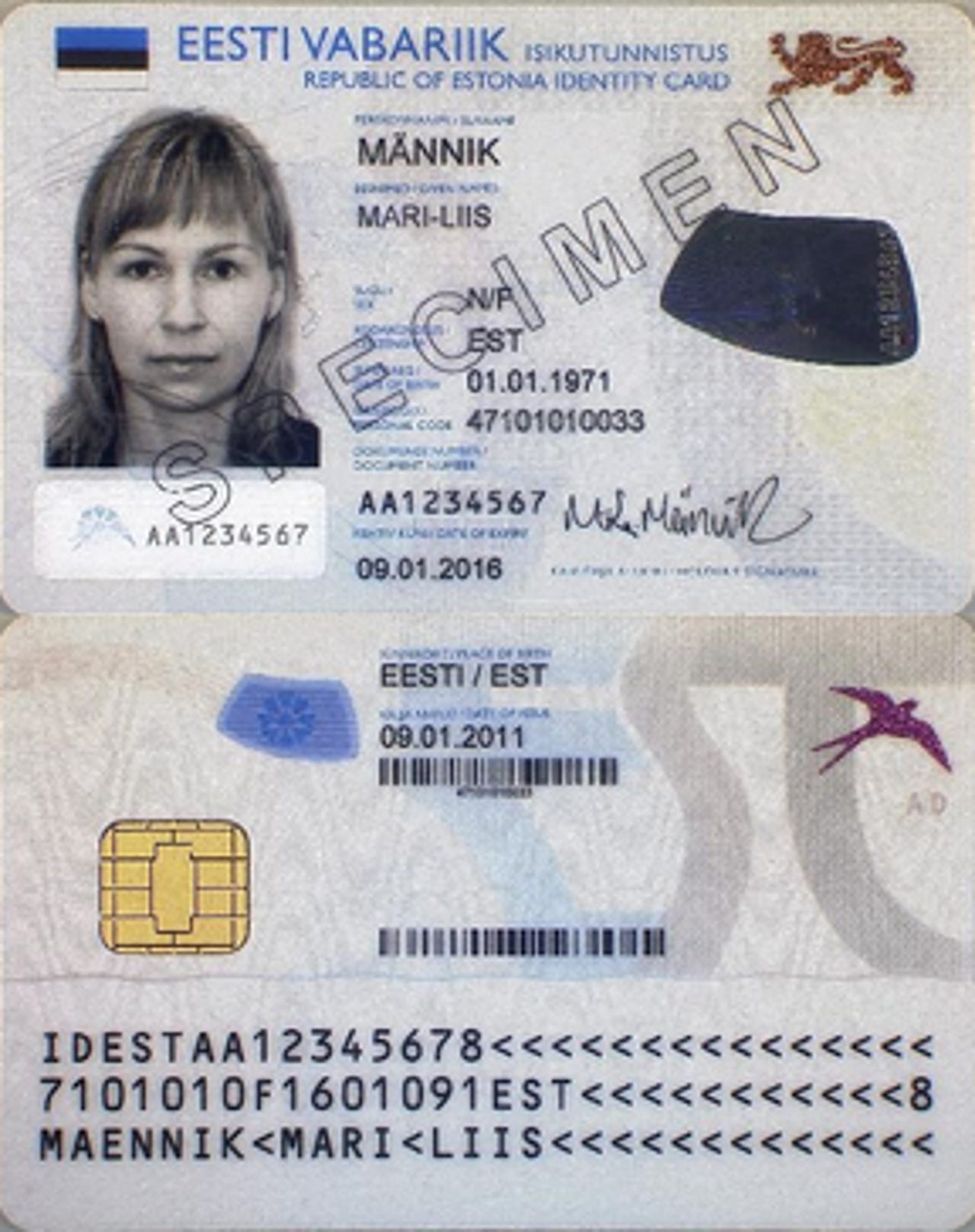Estonia's plan for anyone to be a citizen, digitally: Here's why thousands are signing up


An Estonian smart ID card.
One year into its e-residency plan to offer people who are not Estonian citizens or residents a digital identity, the project's head, Kaspar Korjus, is quietly satisfied with the results.
"Already by May, we had attained the objective we had set for the whole year [of 2,000 e-residents]. In July, the government set a new, higher goal: to have 5,000 e-residency applications by the end of the year. As of today, 7,600 people from 121 countries have applied for e-residency and are using Estonian e-services, mostly for entrepreneurial purposes," he says.
E-residents have created 240 new companies and 530 entrepreneurs use e-residency to administer their companies.
"This means that we've outperformed our initial goals almost fourfold," he added.
Estonian e-residency is a transnational digital identity, available to anyone in the world interested in administering a location-independent business online.
In the event of a crisis, Estonia plans to rely on its allies to hold its critical systems
E-residency is based on Estonian X-Road middleware and enables access to many of the secure digital services that the citizens of Estonia have been using daily for almost a decade.
It is possible to apply for e-residency online. If, after a careful background check, it is granted, a special smart ID card can be collected at one of the 38 Estonian foreign representations or the Estonian Police and Border Guard Board service points.
Future e-residents just have to present a valid passport and provide officials with some biometric data, such as fingerprints.
An e-resident's smart ID card differs from that given to Estonian citizens in that it is not a form of physical identification or a travel document, nor does it display a photo.
Other than that, the cards are very similar, and the services are built on the same state-of-the-art technology, including 2,048-bit public-key encryption.
Both smart ID cards contain a microchip with two security certificates: one for authentication and another for digital signing. Using these solutions with their smart ID card, e-residents can sign documents digitally, verify the authenticity of signed documents and encrypt and transmit documents securely.
Potentially, the most valuable service for the e-resident and also for Estonia is the opportunity to establish an Estonian company online.
For that, the e-resident needs only a physical address in Estonia, which where necessary can also be obtained via an external service provider.
With internet-based solutions the e-resident can administer his or her company from anywhere in the world and conduct e-banking and remote money transfers.
At the end of the year, Estonia's Ministry of Interior announced a new initiative that will soon enable e-residents to open a bank account without physically visiting a bank in Estonia.
As well as the financial institutions in question using additional measures to identify the e-resident, other restrictions and precautions will be applied to ensure the safety of all parties and to comply with various international agreements.
The Ministry of the Interior's idea to give foreigners their own Estonian ID cards was conceived eight years ago, but the project was finally launched in December 2014, when Edward Lucas, a UK journalist, became the country's first official e-resident.
Project director Korjus had joined the project just a few months earlier. With an MSc in e-business and innovation from the UK's University of Lancaster, he already has some serious experience in the field, having worked as a cloud business manager for the local subsidiary of Swedish telco TeliaSonera.
Now he is running what he describes as "the coolest governmental startup in the world". Initial concerns about criminals taking advantage of the new concept have not proved justified.
"During the first year of the project, we've only had to reject about one percent of the applications, and as far as I know we haven't had to cancel anyone's e-residency yet," he said.
For 2017, the goal for new e-citizens has been raised to 25,000, and ambitions for the more distant future are even higher.
When the program was launched in 2014, one of the masterminds behind it, the deputy secretary general for communication and state information systems, Taavi Kotka, announced publicly a rather bold goal: to have 10 million e-residents by 2025.
Korjus says this plan hasn't been abandoned. "It's still valid as a vision. If we're to discuss how to reach 10 million by 2025, we have to remember that it's normal for startups to reach bigger growth often four to five years after the launch. It also took five years for the Estonian ID card to be fully embraced, before it was widely used and before services were built on it," he says.
"It's only a year after we started the program, and it's still in the beta stage. This means that we're encouraging people to use the service but it's still in the development phase."
The key to success lies in engagement with the private sector. "The more e-residents we have as customers, the more attractive the e-residency platform is for the private sector, and the more interest there is to build services on that platform," Korjus says.
"Our goal is to increase the number of e-residents by developing e-residency as a product to be more user-friendly and, through that, also to grow the private sector's interest in it."
Korjus explains that partners from the private sector can be divided in two groups: service providers like banks, notaries and virtual-office service providers; and developers who need secure authentication or digital signing to provide services for their customers.
"For example, we have equity crowdfunding platform Fundwise, which helps e-residents invest securely in international startups. In the near future, we are going to have a co-operation with a new investing platform built for startups, called Funderbeam, and also with Teleport, which is a startup that helps professionals find living and working environments most suitable for them in the world," he says.
Recently, a new business network built for e-residents, called eResNetwork, was launched. And there was an announcement from Nasdaq that it is interested in developing secure services in cooperation with Estonia.